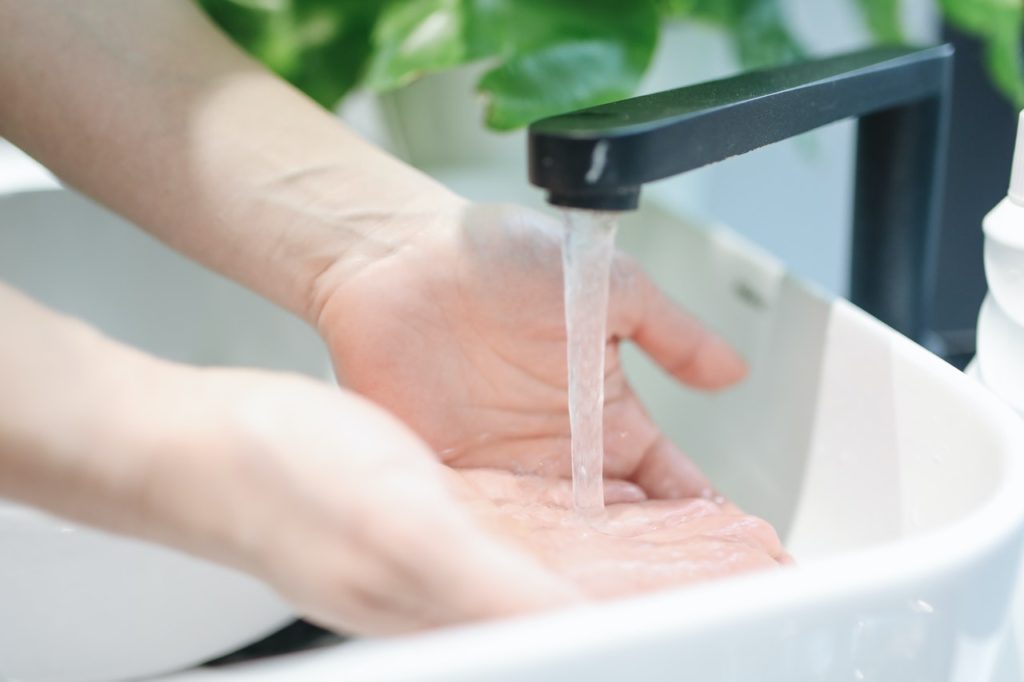
I learned this today. Our skin can allow sweat out, but it doesn’t let water in thanks to a thin layer of fat between the outermost layers of skin cells.
The skin is said to be the largest organ in the human body. Actually, by surface area, it is the second largest because the inside of the small intestine is 15 to 20 times larger. The skin serves as the body’s first line of defense against bacteria, viruses, and other threats to the internal organs. It has evolved to heal holes in itself extremely quickly, leaving scar tissue, to protect our insides. It is important for temperature regulation, insulation, sensation, and making vitamins B and D.
Skin has three layers. The epidermis, the dermis, and the hypodermis. The hypodermis is the layer that attaches the skin to bone and muscle. It also supplies the skin with blood vessels and nerves. It is 50% body fat, which acts as padding and insulation. The dermis is made up of connective tissue and is for cushioning. It contains many nerve endings, hair follicles, sweat glands, sebaceous glands (the release oil), lymphatic vessels, and blood vessels. The epidermis is the outer layer. “Epi” comes from the Greek word meaning “over”. It contains no blood vessels. That is why a shallow cut or scratch sometimes doesn’t bleed. The epidermis experiences a lot of wear and tear because it is always rubbing on things, such as our clothes. To combat this, it constantly replenishes itself. Cells are formed at the bottom of the epidermis and slowly move up as the top layer is sloughed off and a lower layer of new cells is produced. We shed about 40,000 skin cells every minute. A large percentage of household dust is skin cells.
Our skin’s waterproof and protective ability lies in the outer layer of the epidermis, the stratum corneum. All of the cells in this layer are surrounded by fat. Scientists wanted to look at this layer so they shaved some skin off of volunteers. They used a high pressure freezer to cool the skin layers down to -140℃. At this temperature, the atoms stay in place and don’t move. Then they used a cooled diamond knife to slice 25 nanometer thick layers off and viewed them in an electron microscope chilled to -180℃.
They found out that the fatty acids (lipids) were pointing in unexpected directions. Lipids have two ends. They have a hydrophilic, polar, head, and two hydrophobic, nonpolar, tails. The hydrophilic head attracts water, and the hydrophobic head repels water. This is because the nonpolar tails attract each other, sticking together, and they form a tight membrane around the molecule. Water is a polar molecule and is more attracted to other polar molecules. When the two hydrophobic tails of the lipid stick together, they form a membrane that stops the water molecule taking any electrons from them and repels the water. This is why oil and water don’t mix.
The two nonpolar tails of the lipid molecule usually point in the same direction. However, when the researchers looked at the lipids from the skin, they discovered that the two tails were splayed so that they point in opposite directions. They are stacked on top of each other in an alternating fashion which repels water from every direction. It stops water getting in from outside and stops water getting out from inside. (Apart from the pores where we sweat.) The water from sweat comes indirectly from blood. It is absorbed into the cells in the dermis. When we sweat, it is released through our pores.
Scientists think that they can use this knowledge to make more effective drugs. A lot of oral drugs cause side effects when they are metabolized by the liver and intestines. If a method of getting drugs to pass into the body through the skin can be found, it will be possible to get medicine directly into the blood. It would also be possible to more directly target illnesses like cancer in the body and have a more controlled drug release. Now they know this, they can also make more realistic artificial skin.
So, skin is waterproof because the cells in the outer layer of the epidermis are surrounded by fat. Fat lipids have a water attracting head and two water repelling tails. Usually, the tails point in one direction, but in our skin they are splayed and point in two directions. When they are layered on top of each other, they repel water in every direction. And this is what I learned today.
Photo by Polina Tankilevitch from Pexels
Sources
https://en.wikipedia.org/wiki/Human_skin
https://en.wikipedia.org/wiki/Stratum_corneum
https://en.wikipedia.org/wiki/Apocrine
https://www.aocd.org/page/SkinFacts
https://gizmodo.com/why-is-our-skin-waterproof-5906135
https://cen.acs.org/articles/95/i7/Tracing-chemistry-household-dust.html
https://www.khanacademy.org/science/biology/macromolecules/lipids/a/lipids
https://www.ncbi.nlm.nih.gov/books/NBK26871/
https://sciencing.com/happens-nonpolar-molecules-water-8633386.html

